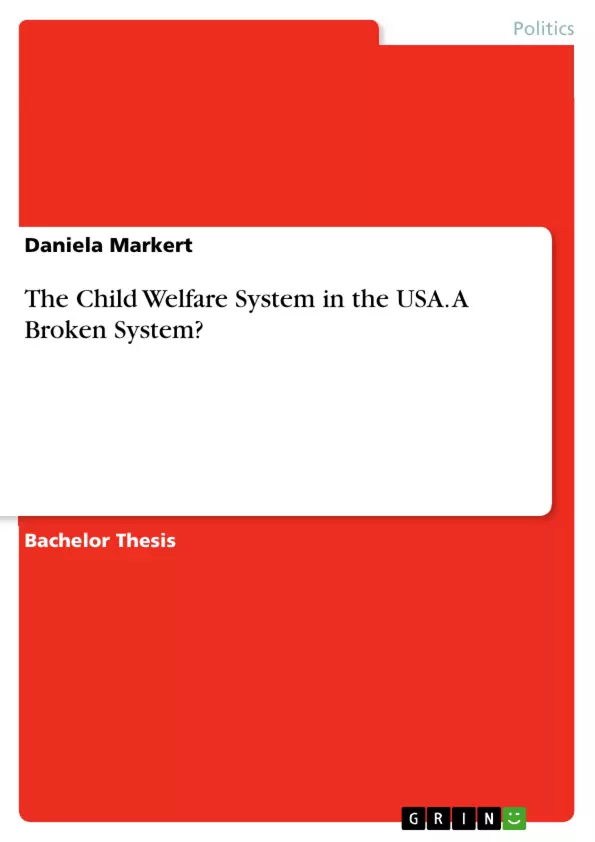Without our parents most of us would not be where we are today. They raised us, taught us important lessons, still have our backs, and support us no matter what. Unfortunately, too often, we take them for granted. Only in difficult times or even when death takes them we recognize how lucky we are and have been for having them.
Not all of us are so lucky. More people than we can imagine either do not have parents or their parents do not take care of them. These people and children grow up without parental love and support. They do not know what it means to have parents who have their backs anytime. Instead, they are taken care of by public or private child welfare services which are institutions that are established under the child welfare system.
The reason for my interest in this topic has been the U.S. American TV-series The Fosters by Peter Paige and Bradley Bredeweg released in June 2013. This family drama series addresses among other topics the one of children having no parents who can take care of them or having parents who cannot take care of them due to issues like substance abuse or incarceration. Two of the main characters are sent from one foster family to the next before they are sent to a gay couple who already have adopted two other children in addition to one of the women having a child of her own from a past marriage. After some trouble the couple adopts both of the two foster children.
In this series, the U.S. American child welfare system plays an important role. It addresses the trouble some foster children go through such as ending up in juvenile prison, experiencing abuse in foster families, and having emotional and behavioral problems. It is the first series I have seen and heard about at all which deals with this topic and I wondered how realistic the series displays the child welfare system and its practices. If it was realistic much more attention would have to be paid to this system and much more would have to be done to protect the children. Therefore, I decided to take a closer look on this topic and to find out if the system is as broken as it is shown in The Fosters.
Inhaltsverzeichnis (Table of Contents)
- Introduction
- History
- Different Types of Out-of-Home Care
- Children in the System
- Reasons for Children Entering the Child Welfare System
- Outcomes
- Children in the System in The Fosters
- Conclusion
Zielsetzung und Themenschwerpunkte (Objectives and Key Themes)
This thesis aims to examine the U.S. American child welfare system, exploring its complexities and effectiveness. The study focuses specifically on the experiences of children within the system, investigating their entry points, outcomes, and the system's ability to meet their needs. The thesis draws inspiration from the TV series "The Fosters" which highlights the challenges faced by children within the foster care system.
- The complexities of the U.S. American child welfare system
- Reasons for children entering the child welfare system
- The outcomes experienced by children within the system
- The role of foster care in the lives of children
- The effectiveness of the child welfare system in meeting the needs of children
Zusammenfassung der Kapitel (Chapter Summaries)
- Introduction: This chapter introduces the topic of child welfare, providing a general overview of the concept and its importance in protecting children's well-being. It outlines the thesis's central research question and its focus on the U.S. American child welfare system. The chapter also introduces the TV series "The Fosters" as a source of inspiration for the research.
- History: This chapter delves into the historical development of the U.S. American child welfare system, tracing its evolution from early forms of child protection to the present-day system. It explores key events, policies, and societal shifts that have shaped the system's evolution.
- Different Types of Out-of-Home Care: This chapter examines the various types of out-of-home care available to children within the U.S. American child welfare system. It explores the characteristics, advantages, and disadvantages of different placements, including foster homes, group homes, and kinship care.
- Children in the System: This chapter explores the reasons why children enter the child welfare system. It investigates the circumstances that lead to child welfare intervention, such as parental neglect, abuse, or substance abuse. The chapter also explores the outcomes experienced by children in the system, including their educational attainment, mental health, and overall well-being.
- Children in the System in The Fosters: This chapter examines the portrayal of the child welfare system in the TV series "The Fosters," analyzing the experiences of the main characters and how the series highlights the system's strengths and weaknesses.
Schlüsselwörter (Keywords)
The primary focus of this thesis lies on the U.S. American child welfare system, encompassing the complexities of its structure, the reasons for children's entry, and the outcomes they experience within the system. Key concepts include child welfare services, foster care, permanency planning, child maltreatment, and the impact of the system on children's well-being.
- Quote paper
- Daniela Markert (Author), 2019, The Child Welfare System in the USA. A Broken System?, Munich, GRIN Verlag, https://www.grin.com/document/1357577



